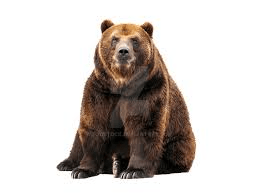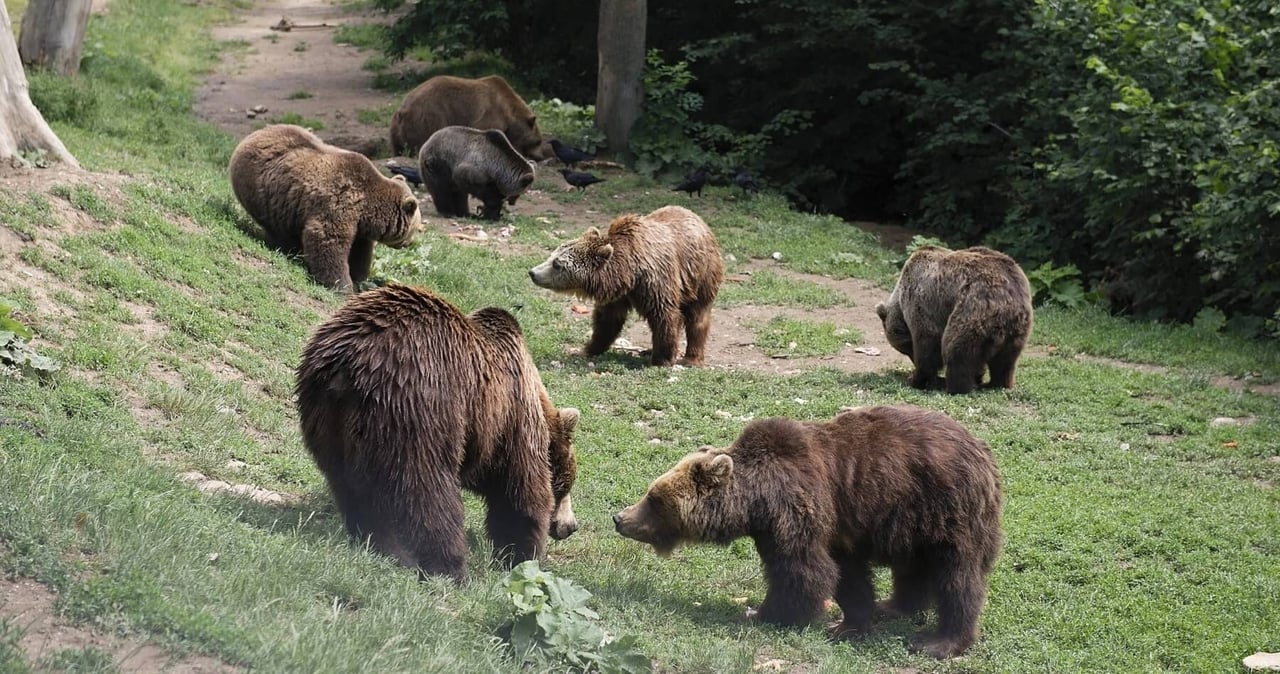What are abiotic factors?
Non-living things
What level of organization is shown in the image?

Organism (a specific species of bear that is living in a particular area)
What is a limiting factor in an ecosystem?
A limiting factor is an environmental factor that can stop a population from growing or increasing.
What is carrying capacity?
Carrying capacity is the highest (maximum) number of organisms in that population that can survive due to the availability of resources.
Scientists who study organisms in their environment are called _____________.
ecologists
What are biotic factors?
Living organisms.
What level of organization is shown in the image?

A population (specific species of bear living in a particular area.)
What are examples of different types of limiting factors that could affect population sizes?
Weather conditions, soil composition, pH of the soil, weather, natural disasters, amount of water, food, and space, disease, and amount of sunlight.
What is the carrying capacity of the snowshoe hare?

Approximately 158,000 snowshoe hare is the carrying capacity in this ecosystem.
When the hare population decreased, what happened the lynx population? Explain why this would have happened.
When the hare population decreased, the lynx population began to decrease because they didn't have as much to eat (not including other limiting factors).
What are the biotic factors in this ecosystem?

Tree, mushrooms (type of fungi), deer, bear, grass, bacteria, etc...
What level of organization is shown in the image?

A community (all the living organisms (biotic factors) that make up the different population can be seen in this image like the following populations: bear, trees, deer, mushrooms, grass, bacteria, etc...)
A specific population of rabbits lived on a large amount of land and there was a severe winter that affected their carrying capacity in this ecosystem. What is the limiting factor and how would this affect the predator population?

Severe winter is the limiting factor. Since the rabbit population decreased over time (and the carrying capacity), then this would probably led the predator population to decrease as well because they would have less to eat.
What is the carrying capacity of the lynx in this ecosystem?

Approximately 6,500 lynx is the carrying capacity in this ecosystem.
During certain years, why did the lynx population begin to increase?
The hare population increased leading to more food available for the lynx. So overtime, the lynx had more food to support its growing population.
What are abiotic factors shown in this image?

soil, water, gases in the atmosphere (like nitrogen, oxygen, carbon dioxide), rocks, sediments, gases dissolved in the water- oxygen and carbon dioxide; temperature of the atmosphere, water, & soil.
What level of organization is shown in the image?

An ecosystem (community (biotic factors) and abiotic factors are shown)
On Isle Royale, an isolated island, if there were no wolves, how would this impact the trees and possibly cause some of them to possibly go extinct?
Wolves are predators of the moose. If the moose don't have any predators, then their populations will continue to increase (not including other limiting factors that could impact their population too). The more moose, then the more trees that are eaten by the moose leading to a decrease in the producers populations.
What is the carrying capacity of rabbits that are able to survive in this ecosystem after the harsh winter? How is this different than before the severe winter?

The carrying capacity is approximatley 340 rabbits. This is the maximum number of rabbits that can be supposed by the amount of available resources in this ecosystem. About 80 less rabbits could be supposed in this ecosystem due to limiting factors.
If an herbivore immigrated to the same location as the hares and competed for the same type of food, what would happen to the number of hares?
The hare population would decrease because there would be less food available (unless they started to eat a different type of food than this herbivore).
What abiotic factors do the plants need in order to survive and grow?

Water, sunlight, carbon dioxide for photosynthesis so they can make their own energy.
What might happen if the abiotic factor, solar radiation/ sunlight, decreased in this ecosystem?

If there wasn't as much sunlight in this ecosystem, then the producers (like plants) would not be able to go through photosynthesis as much and couldn't make themselves as much food.
The rabbits in this food chain became diseased. How did this impact the rest of the food chain? Explain the sequence of events that occurred by analyzing the data shown in the graph.

Since the rabbits became diseased, the limiting factor in this scenario, it caused the grass population to increase since there weren't as many rabbits eating the grass as the rabbit population decreased. Overtime, the population of snakes decreased since they didn't have as many rabbits to eat. As the snake poulation decreased, this led to more hawks not having enough to eat so their populations started to decrease too.
The lynx and hare have an interdependent relationship because their populations depend on each other. Why do these two organisms depend on each other?

When the snowshoe hare population increases, overtime the lynx population will too (not taking into account other limiting factors). When the snowshoe hare population decreases, overtime the lynx population will too (not taking into account other limiting factors). When the lynx population decreases, then this gives the snowshoe hare an opportunity to survive and reproduce where the hare population will increase (not including other limiting factors).
A forest has a stable population of approximately 100 great horned owls. The owls nest in hollow trees, eat small animals, and have no predators. One year, a large new housing development is built, destroying half of the forest. How will this impact the carrying capacity of the forest and the owl population within the forest?
The carrying capacity will decrease and the owl population will decrease because the owl's habitat was destroyed.